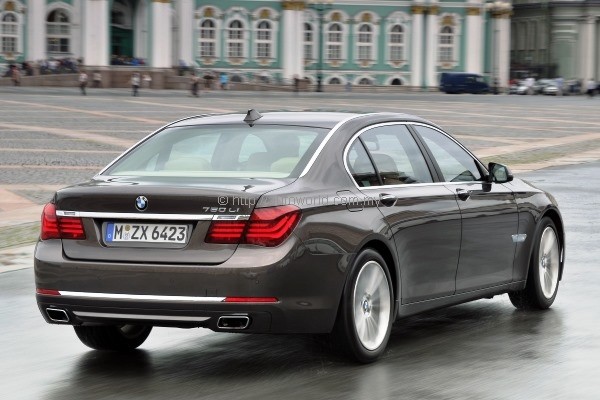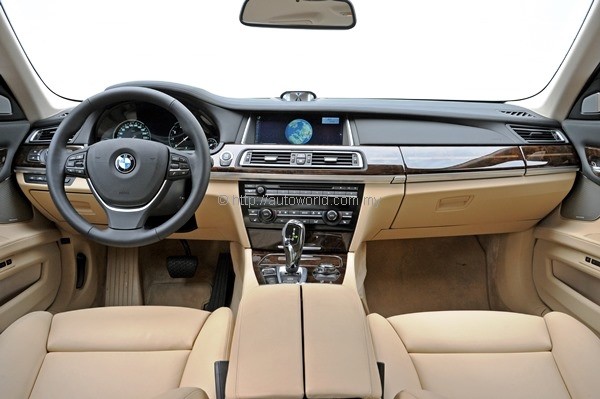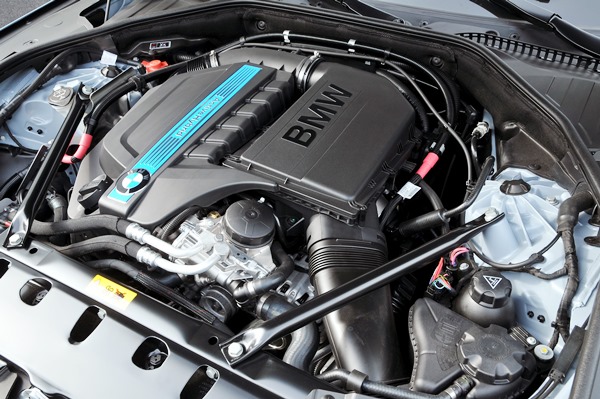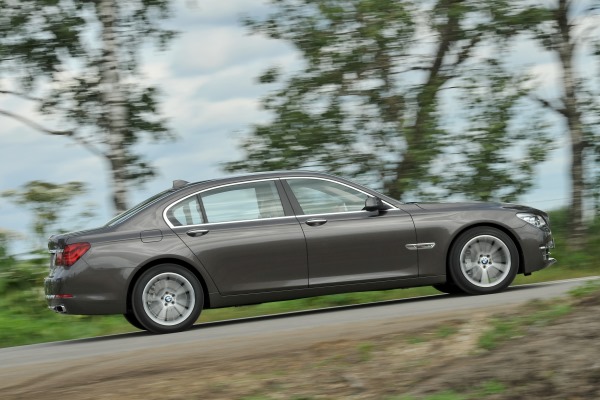BMW 7 Series facelift launched in Malaysia
BMW Group Malaysia has officially launched new and improved versions of its flagship 7 Series limousine available exclusively in long-wheelbase bodystyle. Powered exclusively by 3.0-litre 6-cylinder engines, the facelifted F02 7 Series is offered in three variants that will officially go sale from 30 March 2013 onwards.
Aesthetic enhancements to the new 7 Series are typically subtle as per BMW’s usual practice with facelifts. The front bumpers have been reprofiled with greater detail, particularly at the corners where the front fog lights reside, and the kidney grilles now carry a more prominent appearance with a reduced number of slats. Updates to the rear are even more subtle, a chrome strip visually connecting the two bumper reflectors (themselves mildly reshaped) being the only noticeable differentiation against the previous model.
Forward illumination is supplied by Adaptive LED headlights incorporating a High Beam Assist with Anti-Dazzle feature that allows the car to maximize headlight coverage without dazzling on coming traffic. The system relies on input from sensors mounted inside the rear view mirror housing and it continuously monitors lighting and traffic conditions ahead to determine the best possible distribution of light.
Inside, BMW has worked to improve seat ergonomics to give better support and long distance driving comfort. Rear passengers have access to two free-standing 9.2-inch flat screen monitors for more personalized entertainment. The flagship ActiveHybrid 7L variant comes further equipped with a 16-speaker Bang & Olufsen High End Surround Sound System for supposedly better sound quality.
Driving information is presented by a new Multifunctional Instrument display replacing the traditional meter clusters. Employing what BMW calls black panel technology, it still mimics the appearance of old-school analogue instruments but drivers are able to customize the display in their preferred colours and design. For example, when Eco Pro driving mode is selected, the rev counter is replaced by a blue Eco Pro display showing the number of bonus kilometres accrued by the various fuel saving measures.
The Eco Pro driving mode is part of BMW’s EfficientDynamics suite of fuel-saving enhancements offered in the company’s entire range of models. In the new 7 Series, the dedication to the cause is taken a step further by incorporating data from the navigation system to anticipate bends, junctions, and roundabouts to provide the driver with the relevant tips to appropriately ease off the throttle. Additionally, in Eco Pro mode, the engine de-couples the combustion engine when coasting at speeds from 50 to 160kph.
From the previous five-variant line-up, BMW has streamlined the 7 Series range to now offer only three variants. The diesel-powered 730Ld is one unfortunate casualty, low demand being the cited reason. Also dropped from the line-up, but not unexpectedly, are the high capacity 750Li and 760Li variants, leaving, as mentioned earlier, a range powered exclusively by 3.0-litre six-cylinder engines in three different forms – naturally aspirated in the 730Li, turbocharged in the 740Li, and turbocharged hybrid in the ActiveHybrid 7L.
Powered by the venerable and award-winning N52B30 engine, the 730Li is now the only naturally-aspirated six-cylinder model in BMW Malaysia’s line-up, offering 258hp and 310Nm on tap for the driver. Although the 2.0-litre four-cylinder N20 engine is designated as the replacement for this engine, BMW believes that its clientele at 7 Series level will not be receptive of an engine of such a small capacity. The N52 in this guise will continue serving in the 7 Series until the end of its model life cycle.
Now equipped with an 8-speed automatic transmission, as opposed to the previous 6-speeder, BMW quotes an 11% improvement in fuel economy for the 730Li at 8.7 l/100km. Carbon dioxide emissions are quoted at 202 g/km. Improvements are even more stark in the 320hp/450Nm 740Li, a 21% improvement to record 7.9 l/100km and 184 g/km, ironically even better figures than the less powerful 730Li.
The same turbocharged engine of the 740Li is paired with a 55hp electric motor in the ActiveHybrid 7L to achieve a combined system output of 354hp. BMW has specified the ActiveHybrid 7L with M Sport enhancements as standard for the Malaysian market, and this is indeed the most powerful 7 Series your ringgit can buy, able to sprint to 100kph from rest in 5.7 seconds. It is also the most economical, with claimed fuel consumption and carbon dioxide emission figures of 6.8 l/100km and 158 g/km respectively. The ActiveHybrid 7L is capable of sustaining full EV motoring at speeds up to 160kph. Its maximum possible cruising range in full EV mode is 4km at a constant speed of 60kph.
Unlike the ActiveHybrid 3 and ActiveHybrid 5, the BMW ActiveHybrid 7L does not enjoy the specially-negotiated tax breaks enjoyed the two models. At the launch press conference held in conjunction with the BMW Malaysia Open tennis tournament, it was clarified that the tax reductions enjoyed by the ActiveHybrid 3 and ActiveHybrid 5 are tied into BMW’s CKD programme which assembles the 3 Series and 5 Series locally, though this does not imply that the ActiveHybrid 3 and ActiveHybrid 5 are going to be assembled locally. (Forget logic.) For the 7 Series, BMW sources the petrol models from Thailand and the ActiveHybrid 7L from Germany.
Prices for the newly facelifted BMW 7 Series, on-the-road without insurance, start at RM648,800 for the 730Li, going up to RM818,800 for the 740Li, and up to RM938,800 for the ActiveHybrid 7L.
Pictures: Official BMW release.
































